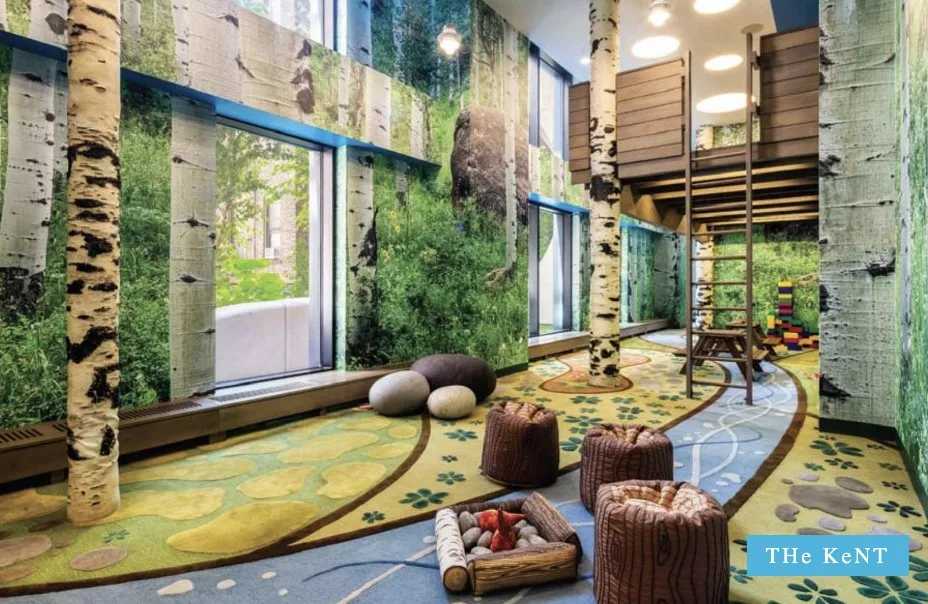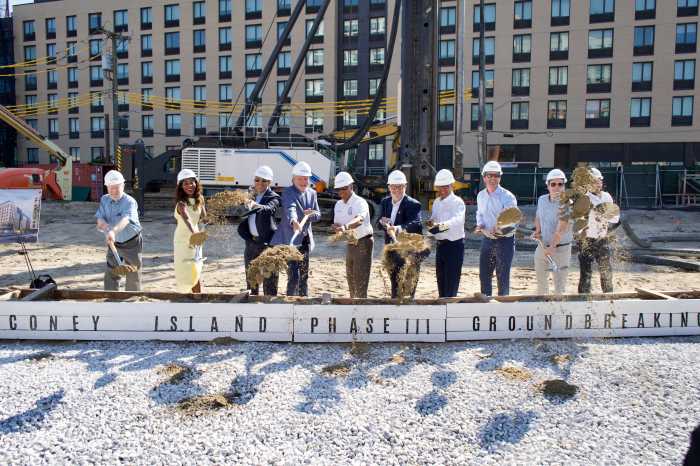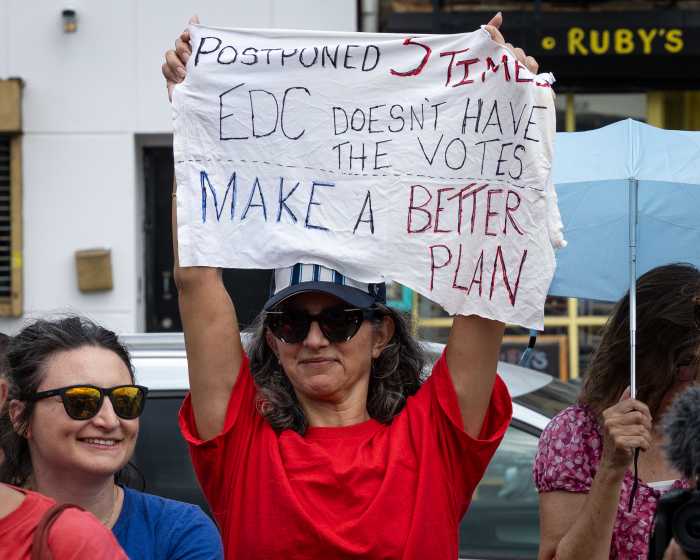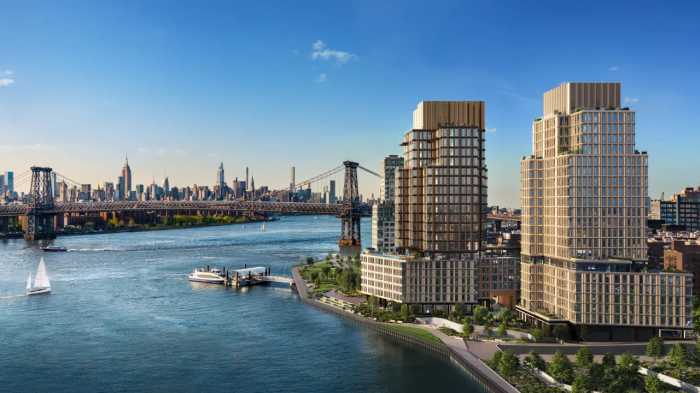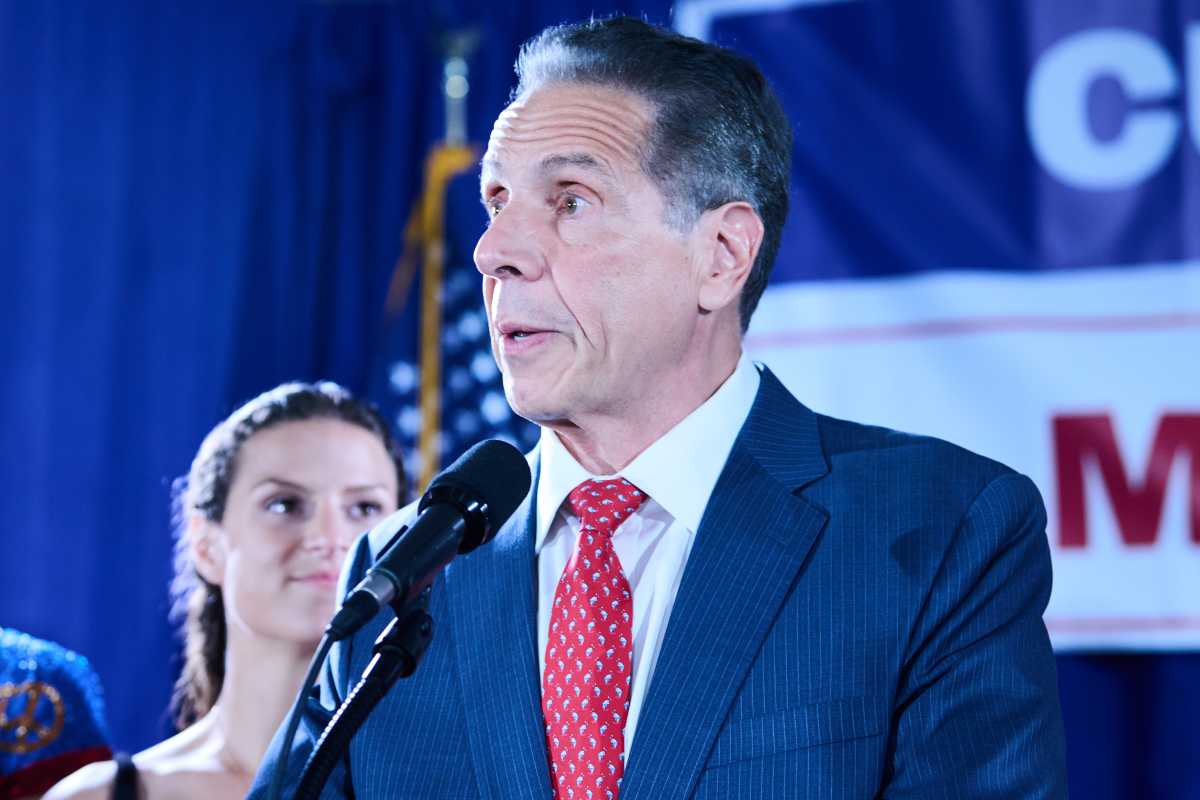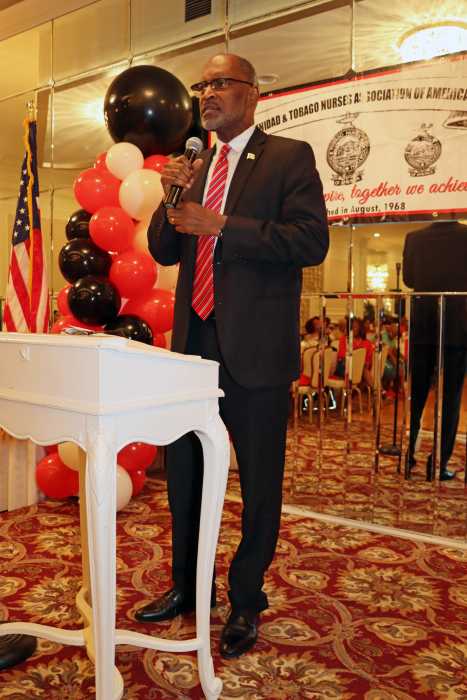Atlantic Yards will cause “irreparable damage to the quality of life in the borough of Brooklyn,” members of Community Board 6 decreed last week, calling for Bruce Ratner’s mega-development to be redrawn before it is approved by state authorities.
In a series of four motions, CB6 crystallized criticisms of the scale and traffic impact of the 16-tower residential, hotel, arena and office-space development.
“Within a quarter-mile [of the arena], the population will increase by 60 percent. No mitigation scheme can prevent the dangers that such overcrowding will create,” said board member Jeff Strabone.
Atlantic Yards would bring 2,581 new cars, 14,410 residents and — on game nights — 20,500 basketball fans to Prospect Heights, according to engineers hired by the developer.
Yet even as they criticized the $4.2-billion Atlantic Yards, the board members emphasized that they supported development at the site abutting the intersection of Atlantic and Flatbush avenues.
“We want to work with the state,” said Jerry Armer, chairman of CB6. “But it is impossible to know if we will be able to support Atlantic Yards until we see how they plan to mitigate the things we see as problems.”
The board — residents and business owners in Park Slope, Cobble Hill, Carroll Gardens, Gowanus and Red Hook — are selected by local city councilmembers and Borough President Markowitz.
Their vote is merely advisory, but it signifies the gulf separating borough residents and their local boards who oppose the project from elected officials who support it.
“People of good will can differ, [but] I am confident that as Atlantic Yards becomes a reality, the board’s members will join me, and the majority of Brooklynites, in celebrating this project,” Markowitz said.
The only opposition to the Sept. 13 vote came from two union organizers who are members of CB6.
“This is a goldmine of jobs for the community and [the board] isn’t listening to that,” said Anthony Pugliese, an organizer for the District Council of Carpenters.
Similar comments were made by union members — and their leaders — at the state’s final public hearing on the 22-acre project this week.
Wearing glossy stickers proclaiming “Yes In My Backyard,” union men dominated the Sept. 18 hearing, cheering the developer for a plan that promises to create 1,500 construction jobs each year during its 10-year buildout.
Opponents went head-to-head with the union reps, blasting them for “naive” support of a real-estate developer who is getting hundreds of millions in subsidies and tax abatements.
“With the $1 billion this project is going to cost the state, you could create over 2,000 $75,000-year jobs — with benefits,” said Fort Greene resident Anurag Hedda.
And others criticized the state’s draft environmental impact statement for using outdated numbers in an attempt to downplay the impact of the thousands of new residents.
“[One school] is listed at 80 percent of capacity,” said Mary-Powel Thomas, president of District 15 Community Education Council. “But this year, the school’s at 98 percent of capacity.”
After the close of the public comment period on Sept. 29, state planners are required to read thousands of pages of testimony and written submissions and write a final environmental impact statement. The FEIS will then be voted on by the state Public Authorities Control Board, the three-man panel that killed the Jets stadium last year.
That approval vote is expected before Gov. Pataki leaves office at the end of the year.



